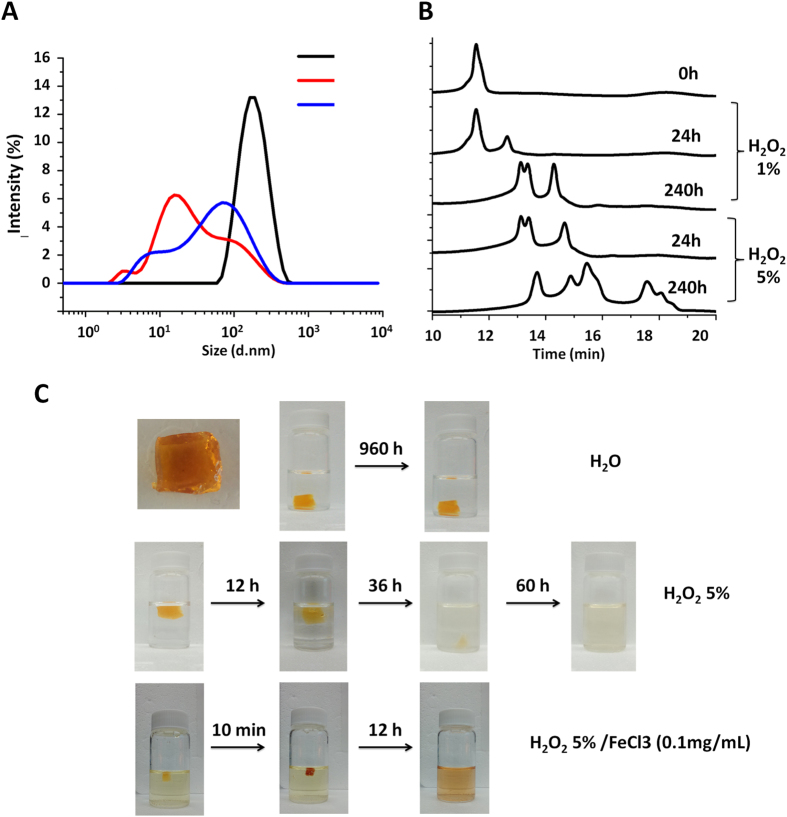Figure 3.
(A) DLS size distribution of oxNG2-DFO dispersed in ddH2O (black line), 1% H2O2 (blue line), and 5% H2O2 (red line) after 240 h incubation at RT. (B) Changes in the apparent molecular weight of oxNG2-DFO in the presence of 1% and 5% H2O2 as monitored by GPC at RT (C) Images of oxidation responsive bulk hydrogel slabs incubated under various oxidative stress conditions: (top row) H2O2 0%; (middle row) H2O2 at 5%; (bottom row) H2O2 at 5%/FeCl3 (0.1mg/mL). Hydrogel slab was stable in H2O with no significant shape change observed up to 960 h incubation; hydrogel in 5% H2O2 could no longer be observed with the naked eye after 60 h incubation; in the presence of 5% H2O2 and FeCl3, hydrogel slab visually degraded completely after 12 h incubation. This is likely due to the known catalytic role Fe(III) plays in oxidizing H2O2 to generate ROS and thus elevating oxidative stress levels even further.

